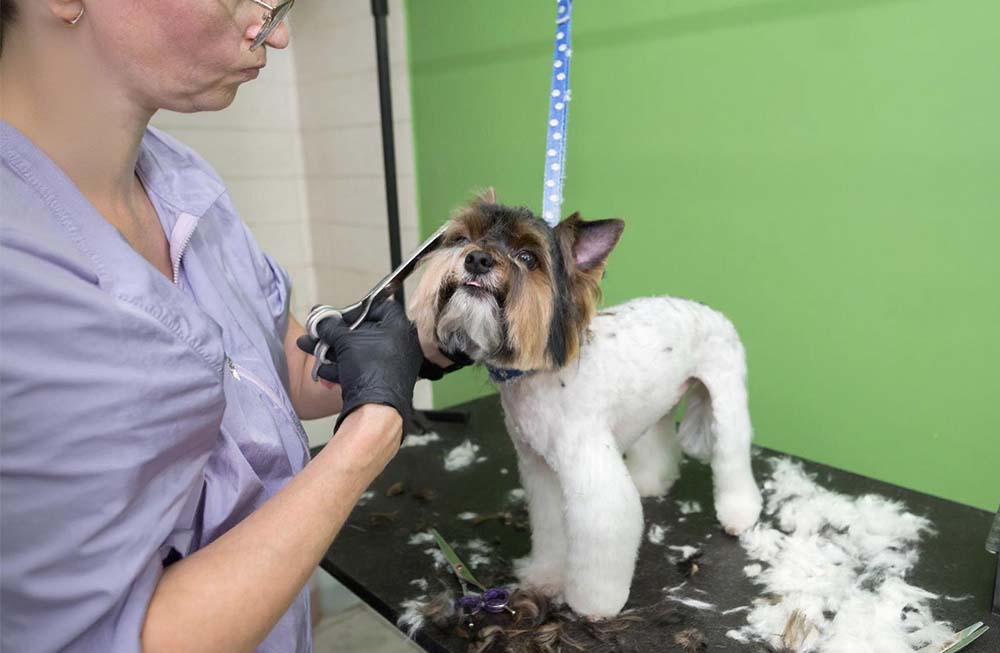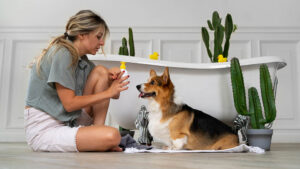Dog grooming is one of the critical factors in ensuring that your pet stays healthy and in good health. It keeps a dog clean, comfortable, and free from diseases like matting skin infections and unpleasant odors. However, this often happens through many wrong ways most people use when grooming their dogs, which affects the health and appearance of the dog. Understanding how to prevent common grooming mistakes will ensure you give the best care to your dog. Here, we will educate you on a few of the most common dog grooming mistakes to avoid and then give some tips on how to prevent them.
One of the most frequent dog grooming mistakes to avoid includes not brushing the dog regularly. Brushing the dog’s coat removes loose hair, dirt, and debris that might have accumulated while avoiding tangles and mats. Neglecting the brushing of the dog’s fur leads to painful matting with trapped dirt and moisture that develops into infections. The frequency depends on the breed or type of coat your dog has. Long-haired breeds, like Shih Tzus or Poodles, should be brushed daily to prevent tangling. On the other hand, short-haired breeds like Beagles or Bulldogs only require a brush once a week to remove loose fur. Missing brushing sessions lead to a build-up of dead hair and dull coat.
Another common dog grooming mistake to avoid is using human grooming products on your dog, including shampoo or conditioner. Human products contain chemicals incompatible with a dog’s skin and cause irritation, dryness, or allergic reactions. Dogs have pH levels on their skin that differ from those of humans. This is why it is important to use grooming products specially meant for dogs. Only use dog-friendly shampoo and conditioner that go with your pet’s coat and skin. If your dog is sensitive or allergic, prefer hypoallergenic or mild products to avoid harm.
Not Bathing Your Dog Enough
One of the common grooming mistakes pet parents make is not giving their dogs enough baths. With today’s advanced and well-formulated pet care products, it’s safe—and often beneficial—to bathe your dog as frequently as once a week, especially to keep their fur and skin clean, healthy, and free from infections. This becomes even more important during extreme weather conditions like heat, rain, or cold, when dirt, moisture, and allergens can build up quickly. Regular bathing using lukewarm water and a mild, dog-specific shampoo helps maintain hygiene and comfort, keeping your pet fresh and happy all year round.
Trimming is one of the grooming habits that most owners often miss, so it falls into the common dog grooming mistakes to avoid. Long nails may cause your dog pain or lead to infections, joint pain, or a problem walking. Long nails tend to crack and sometimes break off, which may be painful for your pet. So, it is very much necessary to maintain the nail length of your dog at a healthy level through nail trimming. If you’re unsure how to cut your dog’s nails, seek guidance from a veterinarian or a professional dog groomer. Never clip too close to the quick. If you accidentally clip the quick, dab a little styptic powder to get it to quit bleeding.
It is one of the most common dog grooming mistakes to avoid that many owners avoid ear and eye care of dogs. Basset Hounds and Cocker Spaniels are especially ones because they have long ears, which have a high rate of infection there. Not cleaning the dog’s ears regularly often leads to wax accumulation, which causes infection and odor. An ear-cleaning solution for dogs can be applied on a cotton ball to gently wipe out the inside of the ear flap. Avoid deep inserting something inside the ears since this will harm your dog’s ears. Similarly, eye care is equally important, and specific breeds tend to have tear stains. Clean the eyes regularly using a damp cloth to avoid thickening.
The wrong tool for grooming can leave your dog uncomfortable, resulting in mediocre grooming. For example, using human combs or brushes might tear your dog’s fur apart, while poor-quality nail clippers might tear a hole. Therefore, one has to ensure he buys dog-combing tools; for example, the slicker brush is highly effective on dogs with long hair, while the deshedding brush is on short-hair dogs. Further, choose nail clippers designed for your dog’s size and breed to make trimming easier and safer.
Many pet owners rush through the grooming process, which can be stressful for them and their dog. Rushing or being too rough can lead to anxiety, discomfort, or even injury. Grooming should be a calm and positive experience for your dog. Take time with each grooming session, and break it into manageable parts if needed. If your dog is anxious or fearful of grooming, work on a positive association and offer rewards such as treats, praise, or playtime afterward. The easier your dog is with the process, the less stressful grooming will be.
Dental care is also very important but commonly overlooked in the many dog grooming mistakes to avoid. Dogs will face dental issues like plaque, tartar, and gum diseases. All these may lead to bad breath and many other health issues. Brushing your dog’s teeth will ensure its oral health is in good condition. You can use a dog-specific toothbrush and toothpaste. These products are specifically designed for pets. Brushing your dog’s teeth at least two to three times a week is advisable. Besides brushing, your dog can clean his teeth through dental chews or toys.




